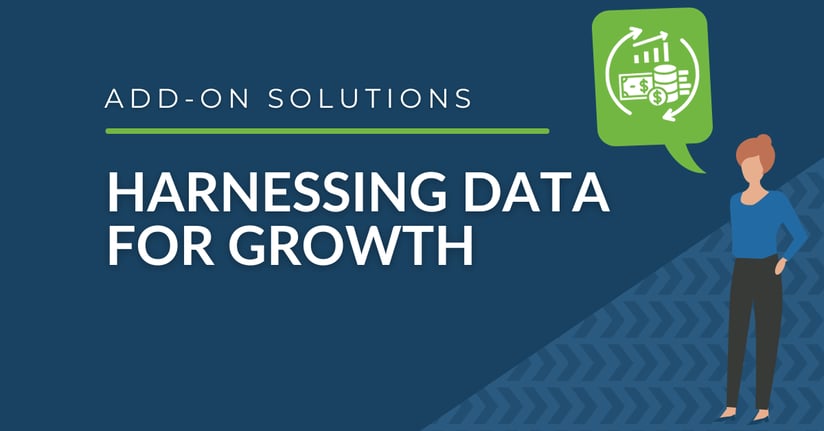We all know the potential which lies within a company’s data when leveraged properly. Data could be the engine that drives a business towards growth and development.
For a company’s financial teams, analyzing their data accurately could mean accessing payments faster and improving the cash flow. However, if an organization is heavily reliant on paper work and spreadsheets, its employees spend precious time manually entering data and chasing forms rather than employing their talents to advance the organization.
We sat down with Joelle Ourtiague, Account Executive at Quadient AR and Jack Di Blasio, Account Executive at Quadient AP, to discuss the immense potential that automating AP and AR processes have for companies seeking to increase their company’s efficiency, analytic abilities, cost effectiveness and ultimately their cash cycle.
What is the difference between AR and AP?
Accounts payable (AP) is the amount of money a company owes, and accounts receivable (AR) is the money a company is being paid. AP and AR are two separate processes; however, both have a huge impact on the business cash flow.
Traditionally, the AP process was paper based. During COVID, this became a major problem. People working from home were unable to access data. It further heightened the need for a system which would allow visibility of data to enable a company to function fully, regardless of where its employees were. There was an urgent need for a cloud-based solution with automated tools to centralize and digitize the process and allow access to all the relevant data, to make sure a company was paying out as well as receiving payments on time. When everything is automated the back office is able to receive alerts which means the collection process can be expedited. On average, we saw that companies were paid 34% faster when using the system. The bottom line is that it is crucial for any business, regardless of size, to be able to understand its financial situation at any given moment and this is what the automated solution is all about.
What are the current trends in the industry?
Recently, Quadient partnered with Gartner who released a study that shows the decrease in cash liquidity as inflation and interest rates increase. The most important part in this regard is the ability to predict these increases. It is much harder to be able to make these predictions with a spreadsheet. In order to be able to measure concrete cash flow we need to examine data analytics. Only then we are able to see exactly what is coming in and what is going out.
The study also highlighted another interesting aspect which is the age range of financial professionals is over 60 years old. Having a solution in place for the time when these employees will retire is crucial. This would ensure the business’s ability to continue work as the workforce is diminishing. Trend wise, everyone is trying to automate processes and increase visibility within their organization, in particular the finance departments.
We’ve witnessed a few economic whirlwinds in the past years. What are the red flags an organization must take note of to prepare itself to successfully navigate future financially turbulent times?
Naturally, this depends on the type of organization and the way the processes are set up. That said, reliance on paper, or disconnected systems within an organization, are a major red flag as this indicates very poor visibility and accessibility to the company data.
On the AP aspect, a main issue is that paper invoices cannot be tracked. If you are not using an automated solution, you are manually scanning the bills, or using a courier to move them from one office to another. These documents are only visible once they are brought back and manually added to the system, in between they cannot be tracked making it very difficult to optimize your finance.
For us red flags are workflows that are paper-based, unconnected systems which are not connected to an ERP system and lack digital centralization.
What steps do you offer a new client to ensure they improve visibility and accuracy?
If you want to increase visibility you need to take note as to what's happening right now. Therefore, we begin the discovery process with a new client by understanding what is happening in their business now. If we find that it is all paper based, we look to understand why this is the case, and then we investigate how we can turn it into digital processes.
How can data mining help with decision making?
With regards to AR, for a company to make accurate projections about cash forecasting and what processes that are not working, they must use AI and analytics. For a specific forecast, a company wishes to know when a particular invoice is likely to be paid. In this case the automated system is able to produce this type of information, allowing a business to learn why things are the way they are. When this process is paper based, it is often impossible to know where the invoice is in terms of the process, which means it is nearly impossible to predict when it will be paid. With solutions like Quadient AP and Quadient AR, we provide data and analytics that offer key insights to improve both the visibility, the workflow, and the ability to make fact-based predictions.
From the customer experience perspective, why do you feel that remaining competitive is so important?
Remaining competitive is important especially with accounts receivable because you want your customers to have the ease to pay you. It is all about getting the receivable as quickly and efficiently as possible. We can achieve this using different technologies. We help in expediting cash flow, which means we are freeing time for employees for other tasks, rather than doing this manually. Our aim is to make sure that automation makes receiving payments from customers as efficient and easy as possible.
At the end of the day, if the customer’s experience is not excellent, the likelihood of getting return business and referrals decreases. If a company does not focus on its customers’ experiences, they are unlikely to grow, in other words, automation is vital for a good customer experience which leads to growth and scalability.
Can you give an example of how Quadient AP has helped a recent customer?
We work with customers who come from all industries, and a lot with healthcare clients. We differentiate ourselves in the marketplace in the way we manage multi-entity setups. There are many AP automation tools out there, but the ability to use a tool that allows you to deal with a multi-entity situation is what sets us apart as this comes down to the issue of visibility once again.
We conducted a broad study on how many invoices one AP representative can manage, and we found that the number is about 450 invoices per month. We also found that numerous companies are scaling and growing, and with that the number of invoices they need to process increases. This means that a company must hire more AP representatives. Here is another key differentiator between us and other companies; We wanted to reduce the amount of time an AP representative needs to devote to each data entry, and we managed to reduce this time by 83%! Our solution allows AP employees to spend far less time on data entry thus enabling them to focus on much more important work.
In addition, we offer archiving and digital indexing, so all your data is accessible at any given moment. You have no need to search for it in a filing cabinet ahead of an audit. Companies come to us for several main issues which include multiple entities and visibility, approval process, manual processes and scalability and access to archived data.
Can you give an example of how Quadient AR has helped a recent customer?
We often see customers who approach us saying they have a full manual process for accounts receivable (AR), so they may be working in their ERP, perhaps even Sage. They claim that although their billing is under control, they need help in expediting payments and ensure their collection efforts are up to par. We see that again the lack of visibility means that despite the fact that our workflows are automated processes we can assign various different workflows to different customers with whom they are working. Our solutions are not one size fits-all, we create the process according to input we receive from our customers. This allows them to pay attention to which bills are missing and what type of tone is used when approaching customers etc.
We see a significant improvement of 35%-40% in DSO (Days Sales Outstanding) just by using an account-receivable tool like Quadiant AR which is extremely significant for a company’s cash flow and what they are then able to do.
With regards to multiple entities across a company’s ERP system, the ability to consolidate and have everything in one place improves the experience for the users as they do not have to navigate through numerous screens; they have all the information they need visibly in front of them.
Does the approval process allow for multiple signatures?
Absolutely! You can have as many signatures as you choose to have in your process, there is no limit. Each customer can have as many stages to their workflow as they see fit.
What do end-customers want when it comes to AR?
We see that customers want two main things; clear communication and easy ways to make a payment. The easier a company makes it to pay them, the faster the bill will be paid. This is excellent for both parties, the one paying and the one paid.
Why is meeting employee expectation so important?
Happy employees remain loyal and hard working. When an employee feels their time is valued, when they feel they are being treated fairly, they are more likely to remain in the company and be devoted employees. We find that when you automate the part of their work which is tedious and does not allow them to show their skills or do anything meaningful, you show them that you value their time and their qualities. No one wants to spend forty hours a week on data entry. When you allow people to focus on higher value tasks, keep them engaged and allow them room to grow, you will impact their happiness at work.
View the full interview here:
If you would like to learn more about Quadient’s solution, visit our AP Automation and AR Automation pages or reach out to your customer success manager.




